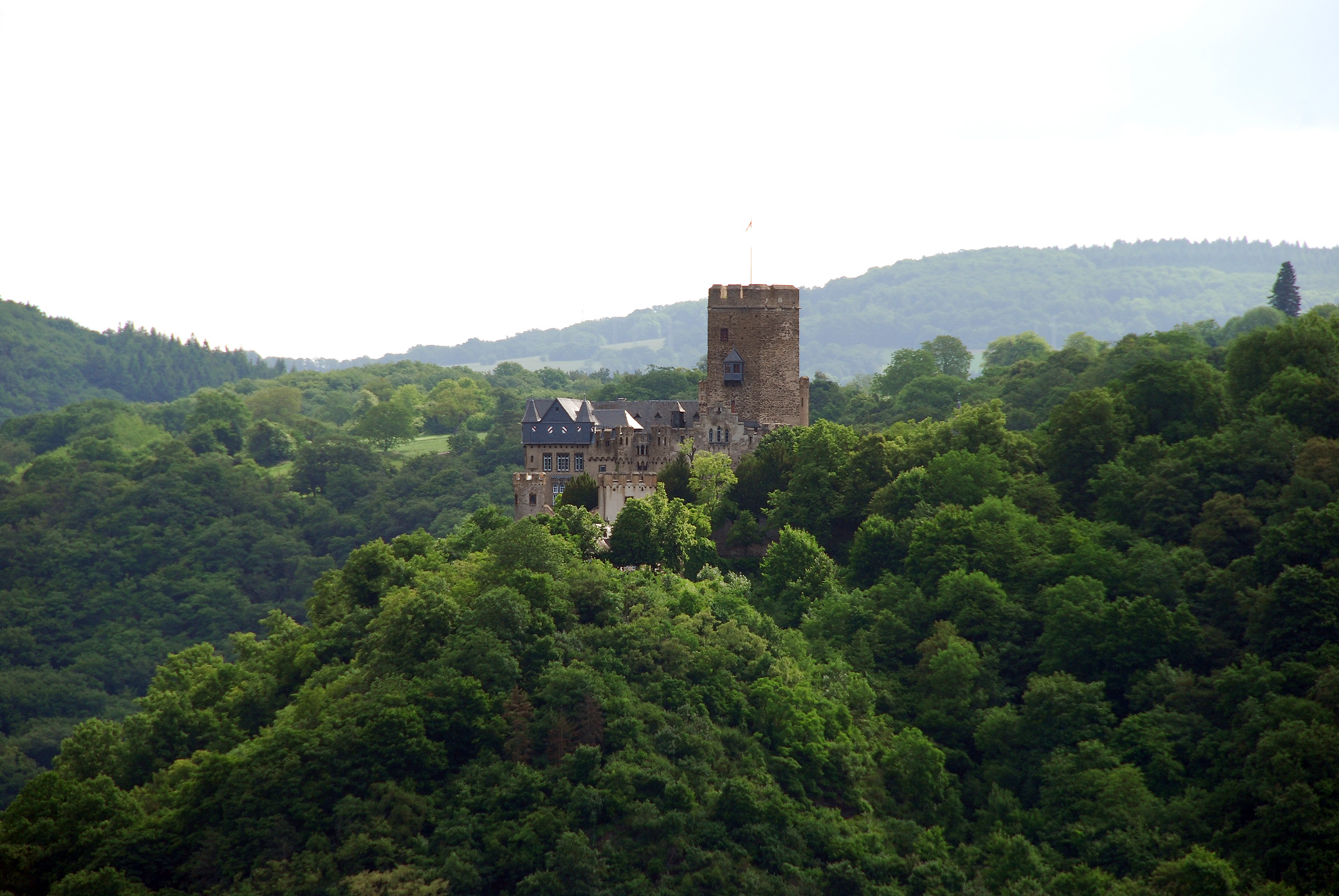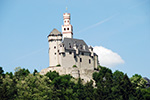History
Burg Lahneck resides high atop a rocky hill at the confluence of the River Lahn and River Rhine. It was built in 1226 by the Archbishop of Mainz, Siegfried III of Eppstein, to protect his territory and the nearby silver mine.

According to legend, the Knights Templar were ordered to disband by Pope Clement V in 1312. This led to the last twelve Templars taking refuge within Burg Lahneck, where they perished in a fight to the death against the overwhelming forces of the Archbishop of Mainz, Peter of Aspelt.
In approximately 1460, Dieter von Isenburg fortified the castle by adding a 10-foot-thick outer shield wall to protect the keep and living quarters of the northern wing, which was most vulnerable to attack, and the western outer gate and outer ward walls.
In 1633, Burg Lahneck was attacked and heavily damaged by Swedish and Imperial troops during the Thirty Years' War. It was attacked again in 1662, and by 1688 the structure was nothing but ruins. It would take nearly two centuries before the castle was restored to its original state in 1860. In July 1774, the writer Johann Wolfgang von Goethe wrote the poem Geistesgrub which Burg Lahneck inspired during his travels down the River Rhine.
In 1907, Burg Lahneck was purchased by Imperial Admiral Robert Mischke whose family still owns the castle today.
Castle Highlights
Burg Lahneck is privately owned and open to the public from April through November, except for Mondays. Its pentagon-shaped bergfried or central keep is rare for German castles and stands over 30 meters high. Burg Lahneck consists of massive outer walls concerning height and thickness, thereby protecting the inner courtyard.
Primary elements of the castle include a chapel, keep, residential buildings, and an inner shield wall with corner towers. Visiting interior portions of Burg Lahneck is only permitted via guided tour, which lasts about 40 minutes. Moreover, a restaurant is outside the castle walls just beyond the west gate. Visitors may go atop the keep to experience breathtaking views of the River Rhine. In addition, Schloss Stolzenfels is visible on the opposite bank of the River Rhine.
Burgh Lahneck can be thoroughly visited within a couple of hours. The Marksburg is nearby via B42, a few miles from Lahneck, and worth a visit for castle lovers and curious tourists alike.
Burgh Lahneck is also haunted.




